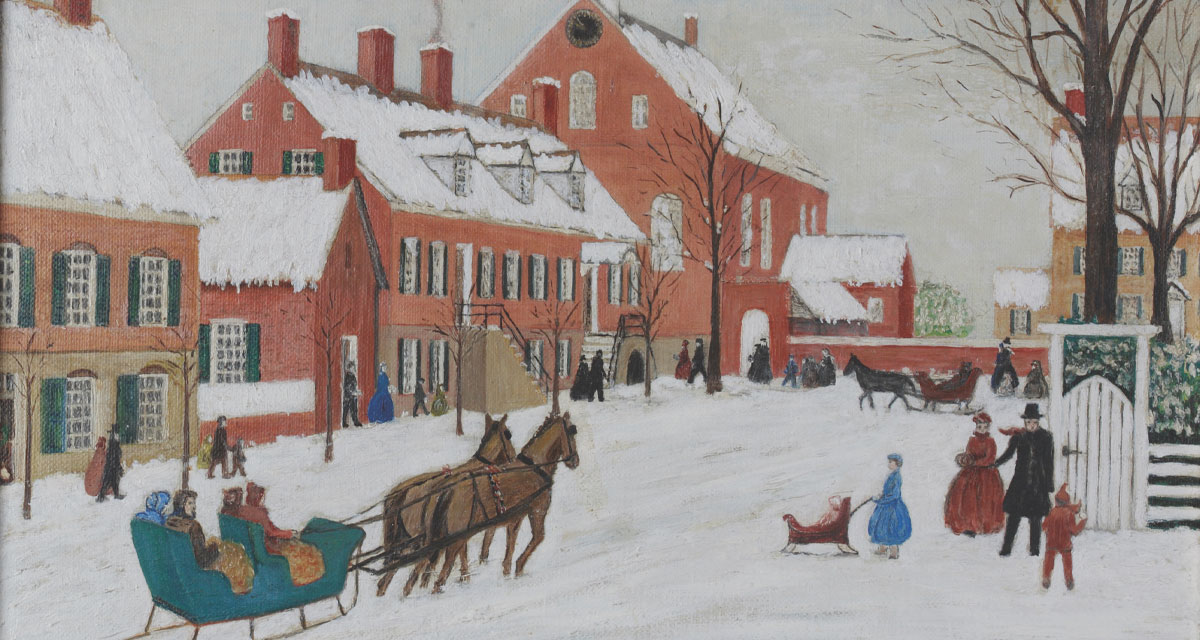Dating back to 1753, Winston-Salem has had a longstanding history and connection with the Moravian church. Bethabara was the first settlement founded by the Moravians after their trek from Bethlehem, Pennsylvania. This German-speaking Protestant group created the village with only 15 people and in the course of 20 years, over 75 buildings and homes were constructed. By 1766, Bethabara was bustling, populated with many people, and was beginning to overflow. The idea for the town of Salem was soon made into a reality. Today, visitors can tour both Bethabara and Old Salem, along with other settlements in the area, to learn about the rich history and culture of the Moravians, as well as the main belief of the Protestant group: “In essentials, unity; in nonessentials, liberty, and in all things, love.” However, throughout the years, Moravian traditions have spilled into many homes and churches, including the Lovefeast, the Moravian star, and the music. While you may be familiar with these traditions, do you know how they were started?
Lovefeast
Many associate the Lovefeast service with Christmas or Easter. Yet, this tradition is celebrated several times throughout the year. During a Lovefeast, spiritual hymns are sung, food and drink are consumed, and messages of hope and goodwill are spoken. This tradition started after the first gathering after Pentecost and is based on the Agape feast. In 1727, the Lovefeast we know today originated. According to the article “The Moravian Church and Its Traditions” on the website MyBrillantStar, the service is “dedicated to Christian love.” It is a tradition founded on love and with the purpose of spreading the love of Christ to others through worship. In fact, the Lovefeast is actually mentioned in Jude 1:12, as a “common meal of the early church.”
The Moravian Star
During a quick drive through the streets of Winston-Salem during the holiday season, one can easily see illuminated Moravian stars on porches and other structures. These 25-point stars—with 8 square and seven triangular cone bases—were created by a Moravian Boys’ School teacher in Niesky, Germany and were used to help teach geometry. In 1880, Peter Verbeek took this lesson he learned as a student and began making the stars for his bookstore. Later, his son founded the Herrnhut Star Factory. In Germany, the Moravian star is known as the Herrnhut Star. In early history, the Moravian star helped people center their lives on, and keep a focus on, the church. Since then, the star has appeared during the season of Christmas, Advent, and Epiphany worldwide, including in the West Indies, Greenland, Central America, and parts of Scandinavia. It is a common feature in Moravian nativities and Christmas villages in place of the Star of Bethlehem. Fun fact: our city uses the star as our official Christmas street decoration and a 31-foot Moravian star can be found atop of the North Tower of Wake Forest Baptist Medical Center during the month of December. This star is known to be one of the largest Moravian stars in the world.
Moravian Music
The traditional songs and hymns we know from the Moravian church began in the United States during the early 1700s. Within the church, music was an essential part of religious life. Early Moravian clergy were also trained in music as much as they were in the liturgy. As they arrived in the United States, the clergy brought this training and numerous instruments with them. Orchestral and chamber music songs were joined by vocals and soloists for worship services, as hymn-singing is a key component of a Moravian service. Today, people can easily recognize Moravian music by the chorale music, brass instruments, and church bands played on holidays, weekly services, and on special occasions. The Moravian style of music is specific to the church and is one of the many things people love.
The Lovefeast, star, and music are three of the most well-known aspects of Moravianism and are closely related to our city. Yet, there are countless more traditions that belong to the Moravian church and add to the special uniqueness of this longstanding Protestant religion that our community holds dear.



















